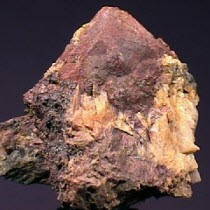I found then answer as to why we are not exploring LFTR technology as an abundant, green energy solution. POLITICS! SHOCK!
As a follow-up to my post on Making the Best of a Bad Situation, here’s a brief history on LFTR (pronounced “lifter”, stands for Liquid Fluoride Thorium Reactor) and why it was nicked in the 1970’s.
Power generated by LFTR technology was successfully tested and achieved in the 1960’s. This is not “Star Terk” tech dreamed up by a bunch of grad students as a science project. It is has been done. And it was not simply replacing thorium with uranium to fuel the reaction. LFTR is a completely different approach.

In 1965, Alvin Weinberg and his team built a working LFTR system that generated electricity from thorium. It had the following advantages over uranium reactors:
- Thorium is abundant in the USA
Enough for about 1000 years of energy - Very Little nasty radioactive waste
- Practically no risk for run-away reactions
Like Chernobyl, Three Mile Island, and recently Fukushima, Japan - No weapons grade material as a byproduct (for use in making nuclear bombs)
Turns out the “no nukes” advantage was considered a bad thing. In the cold war era of the 60’s and 70’s America’s appetite for nuclear weapons was greater than the desire for an inexpensive and safe energy source. So much so that Admiral Hyman Rickover, de facto head of the US nuclear program, wanted the plutonium from uranium-powered nuclear plants to make bombs.
Rickover tossed aside Weinberg along with anybody who advocated LFTR. His somewhat twisted logic was what good is a nuclear reactor if you can use it to make bombs? In 1973 Rickover had Weinberg fired from his position at Department of Energy after 18 years of service. Weinberg continued to be an outspoken, yet almost solitary voice for LFTR until he died in 2006.
It is ironic that in 1973, the same year Weinberg was blackballed, was “the most pivotal year in energy history,” according to the US Energy Information Administration. It was the year the Arab states cut off oil supplies to the West, igniting the petroleum-fueled conflicts that plague the world to this day. The same year, the US nuclear industry signed contracts to build a record 41 nuke plants, all of which used uranium. And 1973 was the year that thorium R&D faded away.
Imagine what might have happened if the priority had been more about making affordable and clean energy instead of nuclear bombs.
Perhaps it is still not too late!
Here are some good links with more info on LFTR:
http://madmikesamerica.com/2010/06/lftr-energy-too-cheap-to-meter-part-1/
http://madmikesamerica.com/2010/06/lftr-energy-too-cheap-to-meter-part-2/
http://www.wired.com/magazine/2009/12/ff_new_nukes
Leave a Reply